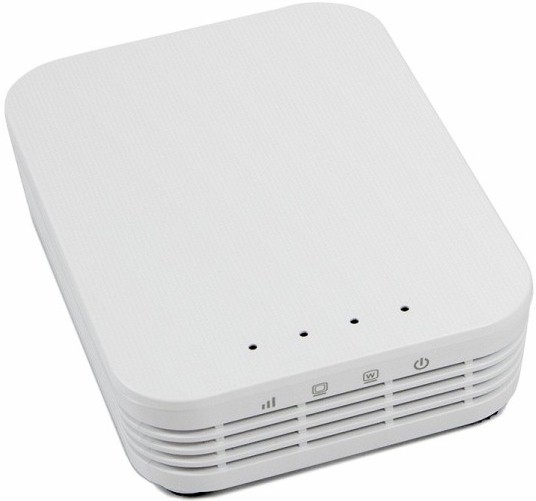
Read on SmallNetBuilder

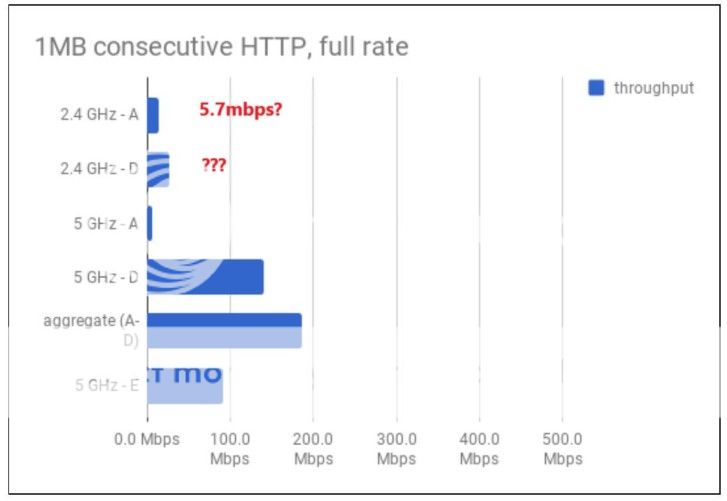
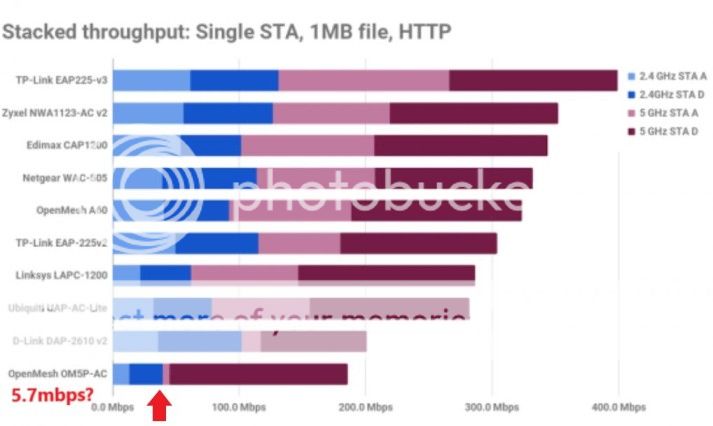
I installed 8 of these AP's in a very large home last year but I never got to perform as much testing as I wanted to. The client hasn't had any complaints but I'm surprised to see such poor 2.4ghz performance. I designed the network for 5ghz so it doesn't matter much (and is probably why there haven't been any complaints) but I'm trying to confirm the maximum single STA throughput on 2.4ghz that Jim saw was only 5.7mbps?? That seems hard to believe even for a cheap little AP like the OM5P-AC. If that's the speed at location D, what was the throughput at location A (worst location)?
Anyway I'll come back later today with answers about the raw numbers; that 2.4 GHz made me shake my head several times too.
That's the one thing we can all agree on
Has anybody reached out to OpenMesh for comment?


For 2.4 GHz single-client (HTTP 1MB repeated download), the raw numbers are 26.3 Mbps for STA D, and 13.2 Mbps for STA A.
I am a big, big believer in sane out-of-box configurations... and if a vendor wants to do well in my testing, they'd better ship with a sane config.
Jim, thanks for digging into this for us.
Does this mean the article should be edited to show that the OMP5-AC has a maximum throughput of 26.3Mbps not 5.7 Mbps at location D?
So when we see an abysmal 23.6 Mbps of traffic to Station D on 2.4 GHz here, this really is the death knell for the little OM5P-AC's 2.4 GHz performance.
Based on all the info on hand, I also don't see where 5.7Mbps came from except perhaps from the 5Ghz speed tests at location A? Could you post the raw numbers for 5Ghz as well?
Totally agree when it comes to home routers but OpenMesh is more business-oriented IMHO. As a result, some might consider shipping with Application Reporting (DPI) on by default as a "sane config" while others might consider shipping with that feature turned off to improve throughput speeds to be the "sane config" - it all depends on what you value more as an administrator.
I hope we can both agree that there's nothing "sane" about speeds this abysmal from an access point at close range
It's completely unreasonable to blame DNS intercept for poor short-range 2.4 GHz performance when the short-range 5 GHz performance was perfectly cromulent, though. 140.9 Mbps at STA D on 5 GHz. The OM5P-AC was clearly not suffering from CPU issues to cause that poor showing on 2.4 GHz.
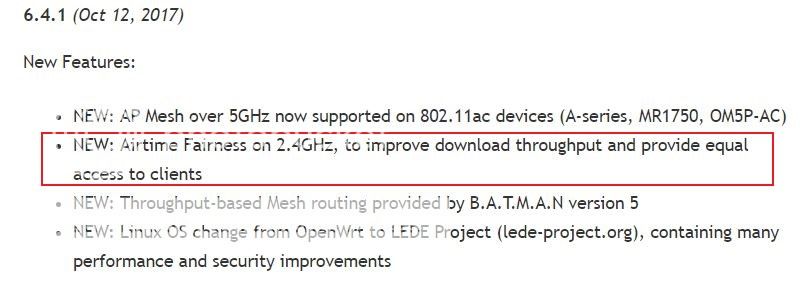
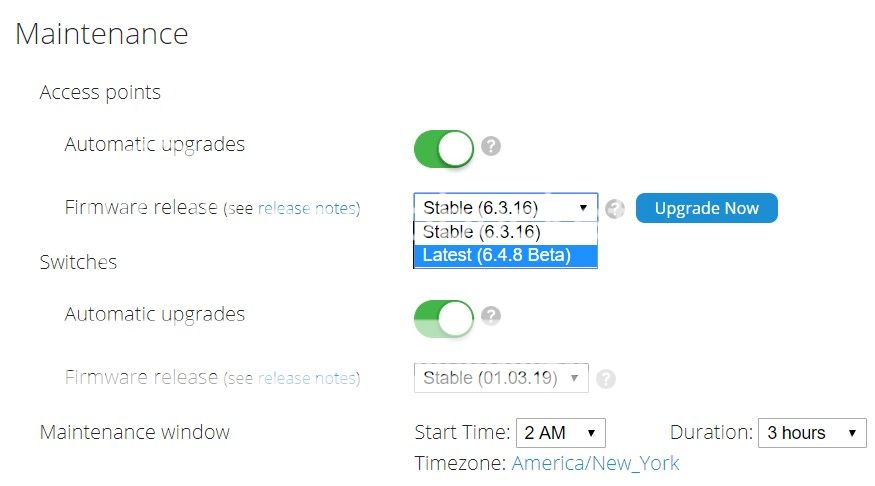

Welcome To SNBForums
SNBForums is a community for anyone who wants to learn about or discuss the latest in wireless routers, network storage and the ins and outs of building and maintaining a small network.
If you'd like to post a question, simply register and have at it!
While you're at it, please check out SmallNetBuilder for product reviews and our famous Router Charts, Ranker and plenty more!
